Verso l’altare o verso il popolo? False alternative, soluzioni artificiali e nuovi linguaggi: il caso della chiesa siro-malabarese

Dal 1999 una decisione sinodale ha cercato di risolvere un conflitto interno alla Chiesa siro-malabarese del Kerala, con una decisione salomonica. Essendoci in quella chiesa due usi nell’orientamento della celebrazione (che sinteticamente vengono chiamati “verso il popolo” e “verso l’altare”) la decisione è stata quella di proporre una celebrazione fifty:fifty, ossia 50/50, nella quale si celebra la prima parte della messa “verso il popolo” e la seconda “verso l’altare”. Negli ultimi anni la tensione è molto cresciuta fino ad arrivare a scontri fisici, all’impiego della polizia e delle scorte armate a causa di decisioni di carattere liturgico, con sollevazioni popolari e del clero. Ciò che colpisce, in tutta questa diatriba, è che la quasi totalità delle prese di posizione ufficiali (sia da parte delle autorità Syro-malabaresi, sia da parte del Vaticano) si limitano ad un linguaggio funzionale, diplomatico o formale, senza toccare le vere questioni teologiche e liturgiche in gioco. Un Convegno Internazionale è stato organizzato nei giorni 20-21 aprile, dedicato specificamente al tema. Presento qui la relazione che ho tenuto in apertura del Simposio (e a seguire anche la traduzione inglese).
Chiese, riti e liturgia – Prospettive rinnovate e sfide nel contesto del Concilio Vaticano II
La liturgia eucaristica può essere definita con questa espressione conciliare “per ritus et preces id (misterium eucaristicum) bene intelligentes” (cfr. SC 48). La liturgia è la intelligenza del mistero eucaristico attraverso i riti e la preghiera che tutta la Chiesa celebra, radunandosi nel nome del Padre, del Figlio e dello Spirito Santo. Ho scelto di iniziare da questa definizione, che traggo dal primo documento conciliare del Vaticano II, dedicato proprio alla liturgia, per mettere subito a fuoco tre aspetti sui quali vorrei soffermarmi nella mia conferenza. Li enuncio subito in partenza per poi riprenderli uno per uno. Dobbiamo anzitutto comprendere le novità fondamentali che il Concilio Vaticano II e la riforma liturgica hanno portato alla Chiesa cattolica, nella cui comunione sta anche la tradizione siro-malabarese. Allo stesso tempo dobbiamo comprendere che la nuova comprensione della liturgia implica anche una nuova comprensione dell’essere chiesa, di che cosa significa ascoltare la parola, celebrare il culto e vivere la carità (§.1) . In questo ambito possono sorgere questioni nel passaggio tra “diverse forme” di orientamento nel culto, rispetto a cui occorre salvaguardare anzitutto le grandi scelte qualificanti del cammino post-conciliare (§. 2). Una riformulazione teologica della questione oggi può essere in grado di offrire una soluzione anche alle contrapposizioni più radicali (§. 3). Questi 3 passi possono offrire la occasione per trovare una mediazione diversa rispetto ad una soluzione salomonica, ma troppo estrinseca, burocratica e artificiale, che si rivela contraria allo spirito della liturgia, così come proposta, per quanto sinodalmente, negli ultimi anni. Vorrei perciò invitare a seguire il mio ragionamento, spogliandoci di quelle letture ideologiche, che si nascondono nelle parole che usiamo per rappresentare la tradizione sana della Chiesa alla quale apparteniamo. Vorrei contribuire così ad una operazione di “pacificazione ecclesiale” mediante una “terapia linguistica”, alla luce del cammino compiuto in questi ultimi 60 anni.
1. Le novità del Concilio Vaticano II
Non è sbagliato pensare che il testo di Sacrosanctum Concilium sia la più compiuta descrizione della “chiesa in preghiera”. Questa descrizione implica alcuni passaggi delicati, che dal 1963 sono scritti nella storia della Chiesa cattolico-romana, e delle singole Chiese in comunione con essa. In questi 60 anni si è camminato in modo più o meno lineare su queste tre prospettive, che hanno un assoluto rilievo non solo liturgico, ma ecclesiale:
a) Una nuova nozione di “liturgia”
La liturgia non è più la “cerimonia affidata ai chierici”, ma il linguaggio di tutto il popolo di Dio. Nella celebrazione liturgica, in particolare nella messa, i primi soggetti sono Cristo e la Chiesa (non il prete o il vescovo). La Chiesa è soggetto come popolo di Dio, sotto la presidenza di un ministro qualificato (vescovo o presbitero) e con la funzione ministeriale che è più ampia della presidenza. Questa nozione allargata di liturgia implica un cambiamento di prospettiva e di sguardo: la celebrazione non è atto di qualcuno, ma di tutti. Per questo si deve parlare di “actuosa participatio”, come di una realtà che la riforma liturgica ha il compito di ricostruire.
b) La “partecipazione attiva” di tutti i soggetti che celebrano
La riforma liturgica, che la Chiesa romana e la chiese in comunione con essa hanno compiuto, è un atto di servizio a questa nuova realtà, che possiamo riassumere in una sola battuta. Quando si celebra la messa, “tutti celebrano”, anche se uno solo presiede e molti sono i ministri. Questo implica una “coscienza ecclesiale” che esce dalle tentazioni clericali e affida la identità ecclesiale all’intero popolo di Dio. Questo riguarda, evidentemente, non solo la liturgia, ma anche la catechesi e la carità, ossia anche il munus docendi e il munus regendi. A noi interessa però comprendere che il ruolo specifico della liturgia è quello di esprimere e di far sperimentare questa identità ecclesiale nello spazio e nel tempo, per ritus et preces.
c) La mediazione corporea, non-verbale e verbale, di questa partecipazione attiva
Se partecipazione attiva significa che “tutti compiono l’unica azione comune”, anche se a diverso livello di autorità, è evidente che le “mediazioni corporee” di questa azione diventano molto importanti. In effetti, come vedremo, molte trasformazioni avvenute immediatamente dopo il Concilio si sono mosse precisamente in questa direzione: ossia nel rendere visibile e tangibile questa “actuosa participatio”, permettendo alla intera assemblea di vivere “personalmente” l’intera sequenza rituale. La riforma liturgica ha molto lavorato sul “tempo” e sullo “spazio”. La rinnovata struttura dell’anno liturgico e il ripensamento della architettura delle chiese fa parte di questo importante sviluppo del rapporto tra azione visibile e fede nella grazia invisibile, che sempre caratterizza la tradizione liturgica e sacramentale cristiana.
2. Le nuove norme e la resistenza di un “modello classico”
Per affrontare questa sfida di “riforma” la Chiesa cattolica si è data subito, già nel 1964, una norma chiara. Leggiamo infatti in Inter oecumenici 91 “Praestat ut altare maius exstruatur a pariete seiunctum, ut facile circumiri et in eo celebratio versus populum peragi possit”. La ragione dell’altare “separato dalla parete” è che “vi si possa stare/andare intorno” e renda possibile la “celebrazione verso il popolo”. Al testo del 1964 corrisponde quasi letteralmente il testo dell’Institutio Generalis Messalis Romani, edizione del 2002, che dice al numero 299 “Altare exstruatur a pariete seiunctum, ut facile circumiri et in eo celebratio versus populum peragi possit, quod expedit ubicumque possibile sit”.
Questo indica un orizzonte che si dischiude a partire dal testo di SC, che non parla concretamente della trasformazione dello spazio celebrativo, ma della azione celebrativa stessa. Come è evidente, questa novità ha visto una serie di resistenze avanzare le loro obiezioni. La resistenza alle nuove logiche è passata soprattutto attraverso un duplice immaginario: quello della eucaristia come “azione del sacerdote” e quella del profilo del presbitero come “sacerdote della eucaristia”. Se si pensa in questo modo, tutto il fascino della celebrazione eucaristica tende ad irrigidirsi sulla azione “del prete”. Il messale di Pio V viveva di questa evidenza, rendendo di fatto il popolo “muto spettatore” di una azione attribuita quasi esclusivamente al prete, salvo la “partecipazione devota” alla consacrazione. Un certo modo di pensare il primato della messa “verso l’altare” (nel senso vecchio del termine, ossia con altare non centrale, ma addossato alla parete) porta con sé una idealizzazione della potestas sacerdotale, che assorbe tendenzialmente tutto il valore della messa. La riforma liturgica è uscita da questo “cono d’ombra” che era iniziato alla fine del I millennio, nella tradizione latina.
C’è però una seconda obiezione, più recente, che è nata solo a partire dagli anni 80, e che sostiene che la “posizione” del prete (o del vescovo) debba condividere quella del popolo, stando diremmo “al di qua” dell’altare, ossia “verso l’altare”. Questo avrebbe come vantaggio di “aprire la assemblea” all’avvento del Signore, evitando che si chiuda su di sé. Non sarebbe importante “guardarsi in faccia”, ma “stare in cammino verso oriente”. Una variante ulteriore sarebbe quella proposta da J. Ratzingere, ossia di un “orientamento alla croce” (posta sull’altare), che supererebbe le contrapposizioni e potrebbe essere considerata “l’oriente interiore della fede”.
Qui, tuttavia, la considerazione della tradizione viene ristretta in una maniera piuttosto forte. Per uscire da queste diatribe bisogna lavorare sul linguaggio con cui abbiamo parlato di ciò che facciamo quando celebriamo l’eucaristia. Per questo nella terza parte del mio testo, che sarà anche la più ampia a creativa, cercherò di impostare in modo diverso tanto il nostro sguardo quanto il nostro pensiero. Per camminare verso una riconciliazione mediata da un linguaggio più fedele a ciò che la azione rituale ci chiede. Cambiare modo di guardare e cambiare modo di pensare implica cambiare il modo di parlare!
3. Lo sviluppo delle forme celebrative e il cammino ecclesiale
Molto spesso siamo troppo condizionati dalle parole che utilizziamo. Non dobbiamo farci imporre le parole sbagliate da modi di pensare l’eucaristia che non sono del tutto adeguati. All’origine dell’equivoco, che oggi lacera l’esperienza della Chiesa siro-malabarese, sta un linguaggio piuttosto ambiguo, ossia che dice una verità, ma non dice tutta la verità. Proviamo a farne una breve storia:
3.1. Una breve storia
a) Per molti secoli abbiamo distinto la “messa senza popolo” e la “messa col popolo”, dando alla prima un valore maggiore. La riscoperta della centralità della “messa con popolo” ha costretto a ripensare profondamente lo spazio della celebrazione, recuperando la posizione centrale dell’altare. Il cambio di “orientamento” dipende da un cambio di comprensione: la messa è un atto della “comunità sacerdotale”. Così gli “altari laterali” perdono valore e l’altare maggiore cambia di forma.
b) Ritorniamo alla espressione che nel 1964 ha aperto la nuova fase e che oggi costituisce ancora il nostro punto di riferimento: “ Altare exstruatur a pariete seiunctum, ut facile circumiri et in eo celebratio versus populum peragi possit”. La espressione che viene usata subito dopo il Concilio, e che ancora oggi ripetiamo, indica una “tendenza” che stava allora iniziando. E utilizza le parole che allora potevano meglio essere comprese. Ma la espressione “affinché con esso si possa compiere la celebrazione verso il popolo”, appare una espressione che oggi merita una approfondimento decisivo.
c) E’ evidente che, sulla base della intenzione del testo la “missa versus populum” e la “missa versus altare” non si possono considerare come letture contrapposte. Certo nel dibattito postconciliare hanno assunto un valore simbolico e costituiscono un modo di identificare, anche con forzature, due mondi e due forme di celebrazione e di vita ecclesiale. Ma qui vorrei segnalare un elemento che potrebbe consigliare di trovare una mediazione “intrinseca” alle due tradizioni. Se esaminiamo bene, la espressione del “versus” non è affatto esclusiva, se non nel caso dell’altare. Dire “versus altare” significa escludere “versus populum”. Non è vero il contrario. Quando infatti si dice “versus populum” si include anche “versus altare”, perché l’altare sta “tra” chi presiede e il popolo.
d) Qui a me pare che le riserve nei confronti del “versus populum”, accusato di “chiudere la chiesa su di sé” anziché aprirla alla trascendenza di Dio (cosa che sarebbe invece garantita dal versus altare), sia una argomentazione molto debole, perché perde il valore “inclusivo” assicurato solo dal “versus populum” e non dal “versus altare”. Chi si rivolge all’altare e dà le spalle al popolo, è costretto, di tanto in tanto, a voltarsi. Chi si rivolge all’altare, al di là del quale sta il popolo, vive la realtà dei “circumstantes”! E’ contemporaneamente versus altare e versus populum.
e) Potremmo allora dire che occorre teologicamente uscire dalla alternativa, creata surrettiziamente utilizzando un linguaggio ancora approssimativo, tra due possibilità. La riscoperta post-conciliare della “missa versus populum” non è a scapito dell’altare, ma recupera la necessità di unificare, in un solo atto, il duplice ma non contraddittorio orientamento all’altare e al popolo. Se l’altare può essere “circondato” dall’atto di culto, ecco che l’orientamento all’altare e l’orientamento al popolo si possono dare nello stesso atto. Invece, l’orientamento “all’altare non separato dalla parete” da parte del ministro e di tutta la assemblea crea una diversa possibilità, che introduce continuamente la necessità di un “riorientamento versus populum” ad intermittenza.
Questo imbarazzo di linguaggio sollecita un nuovo modo di parlare e di pensare.
3.2. Un chiarimento teologico e un cambiamento di linguaggio
a) La tensione tra versus populum e versus altare, come abbiamo visto, deriva da una polarizzazione che è esterna rispetto alle intenzioni del testo del 1964 e del 2002. La vera domanda da porre è: se è davvero l’altare il centro, allora può avere senso che la alternativa sia se si sta “davanti” o “intorno” all’altare. Se la posizione dell’altare è centrale, come prescritto dalle norme, l’orientamento “verso l’altare” è di tutti. Di chi presiede e del popolo. La alternativa non è versus populum o verso altare, ma nel modo di intendere il “versus altare”. Se l’altare è centrale, saranno tutti “verso l’altare”! Perché saranno tutti “circumstantes” e “circumeuntes”, tutti stanno e si muovono intorno all’altare.
b) La storia della Chiesa conosce passaggi difficili. Dai quali non si esce con soluzioni artificiali. Come non è stato possibile, per la Chiesa romana, uscire dalle tensioni causate dalla riforma liturgica, permettendo che, nella stessa parrocchia, si celebrasse il rito romano della riforma e quello precedente non riformato, così non è possibile che nella stessa messa si possa trovare una vera “pace spaziale” celebrando una parte “verso il popolo” e una parte “verso l’altare”. La soluzione di dividere l’orientamento tra liturgia della parola e liturgia eucaristica è una finzione priva di fondamento storico e addirittura priva di oggetto: sarebbe curioso pensare che la liturgia della parola fosse “verso l’altare” quando è pensata istituzionalmente in relazione all’ambone e non in relazione all’altare! La liturgia della parola di per sé non è mai versus altare. E’ però giusto segnalare che le due liturgie (della parola e della eucaristia) hanno diverso orientamento. Ma questo è “in re”, non deriva da una decisione sinodale, ma dalla realtà stessa dell’eucaristia. Nella liturgia della Parola si sta “intorno all’ambone” e nella Liturgia Eucaristica si sta “intorno all’altare”. Questo è il linguaggio che può unificare anche la tradizione celebrativa siro-malabarese.
c) Chiarisco ora meglio il mio pensiero. Non si deve ragionare con la preposizione “in faccia a, davanti a, verso” (che purtroppo si usa anche nel testo sinodale) ma con espressioni come “intorno a, stando attorno a, muovendosi intorno a”. Questo sguardo è quello giusto, che può superare le logiche di una opposizione che risulta infondata. Per recuperare il senso della “riforma liturgica”, e per restare nella logica del cammino comune, si devono creare le condizioni della comunione non con un compromesso al ribasso, ma con un approfondimento del cammino comune. Allora, con una logica di misericordia, non si dovrà contrapporre “verso altare” e “verso il popolo”. Essendo la azione liturgica una azione “di tutti i battezzati”, essa prevede che in tutta la celebrazione eucaristica si stia prima “intorno all’ambone” e poi “intorno all’altare”. Il popolo è il soggetto di questo duplice “stare intorno”. Non si dà mai le spalle a nessuno e non si può accettare che una prima parte sia “verso il popolo” e una seconda sia “verso l’altare”. Piuttosto si dovrà mirare a realizzare una comunione più profonda, permettendo a tutti i vescovi, a tutti i presbiteri, a tutti i religiosi e a tutti i battezzati, di stare, nella loro Qurbana, prima radunati intorno all’ambone e poi radunati intorno all’altare. La Parola e il Sacramento sono il centro dell’orientamento. Non c’è bisogno né di volgersi a oriente né di alzare lo sguardo sulla croce: il Signore parla dall’ambone e il Signore agisce dall’altare: è il Crocifisso e il Risorto, è il Signore presente e in Signore veniente, è il Signore che adoriamo come presente e il Signore che attendiamo come avvenire. Con la sua Parola la assemblea vive in comunione, con il suo Corpo e il suo Sangue annuncia la morte e lo attende alla fine dei tempi.
d) Un grande cambiamento di linguaggio ci permette di uscire dalle contrapposizioni e di camminare, insieme, nella via inaugurata dal Concilio Vaticano II, che tende ad una sempre maggiore apertura alla “actuosa participatio” di tutto il popolo di Dio all’azione rituale dell’eucaristia. Sarà possibile usare misericordia gli uni verso gli altri. Ma non “spaccando a metà” l’unico rito comune, ma sopportando che alcuni celebrino la medesima liturgia (gli stessi testi) con azioni parzialmente diverse. Non con un fifthy-fifthy che risulta artificiale e non conforme alla logica liturgica, ma con la possibilità che l’altare, dove non sia stato ancora staccato dalla parete, rimanga nella sua posizione e porti necessariamente ad un “versus altare” che non può includere anche il “versus populum”. La pazienza in questa diversità è la virtù da coltivare. Alterare il rito e il cammino della riforma di tutti, per creare una comunione artificiale e fittizia, è a mio giudizion una strada senza uscita.
Conclusione
Dal vostro percorso nella storia siro-malabarese possiamo tutti uscire più ricchi: matura, presso di voi, a causa di incomprensioni, una nuova coscienza utile alla Chiesa tutta. Le espressioni che i Padri che componevano il Consilium hanno usato nel 1964 dicevano una novità “in embrione” e la dicevano con la espressione “versus populum”: non era una rivoluzione, ma una migliore comprensione. Grazie alle riforme che poi sono state compiute dopo il 1964, fino ad oggi, possiamo riconoscere quel linguaggio come ancora pensato in termini che potremmo definire “clericali”. Il “popolo” non è solo“destinatario” della celebrazione del prete. Il popolo è “soggetto di celebrazione”, sia pure sotto la presidenza del vescovo-prete e grazie alla mediazione dei ministri. Una assemblea radunata intorno all’ambone e intorno all’altare fa una esperienza in cui, rivolgendosi come soggetto Chiesa al mistero grande di Cristo, scopre Cristo Signore come soggetto che dona la sua grazia alla Chiesa. Un accorgimento architettonico (staccare gli altari dalla parete) ci ha fatto maturare nella identità: ha trasformato il “versus” in un “circa”. E lo ha fatto anzitutto come esperienza di una Chiesa “intorno all’altare”, che sta nella comunione con il suo Signore. Recuperare, contemporaneamente, anche la esperienza “intorno all’ambone” ci permette di crescere ancora in quella piena “formazione liturgica” alla quale papa Francesco ci ha richiamato nella sua lettera Desiderio Desideravi, dalla quale traggo la citazione dal n.36, con cui vorrei concludere:
“i ministri ordinati svolgono un’azione pastorale di primaria importanza quando prendono per mano i fedeli battezzati per condurli dentro la ripetuta esperienza della Pasqua. Ricordiamoci sempre che è la Chiesa, Corpo di Cristo, il soggetto celebrante, non solo il sacerdote. La conoscenza che viene dallo studio è solo il primo passo per poter entrare nel mistero celebrato. È evidente che per poter condurre i fratelli e le sorelle, i ministri che presiedono l’assemblea devono conoscere la strada sia per averla studiata sulla mappa della scienza teologica sia per averla frequentata nella pratica di una esperienza di fede viva, nutrita dalla preghiera, di certo non solo come impegno da assolvere”.
Non c’è più una alternativa tra “versus populum” e “versus altare”. Se il soggetto celebrante è la Chiesa, Corpo di Cristo, e non il solo sacerdote, non vi è più la alternativa tra popolo e altare, ma resta solo la differenza (nel tempo e nello spazio) tra “circa ambonem” e “circa altare”. La Parola e il Sacramento orientano intorno a sé il popolo di Dio, il corpo di Cristo, il tempio dello Spirito.
000 — 000
Versione inglese di Varghese Ambalathingal
CHURCHES, RITES AND LITURGY- RENEWED PERSPECTIVES AND CHALLENGES IN THE CONTEXT OF THE SECOND VATICAN COUNCIL
The Eucharistic liturgy can be defined by the conciliar expression “per ritus et preces id (mysterium eucaristicum) bene intellegentes” (cfr. SC 48). The liturgy is the understanding of the Eucharistic mystery through the rites and prayers celebrated by the whole Church gathered in the name of the Father, the Son and the Holy Spirit. I have chosen to begin with this definition, which I draw from the first conciliar document of Vatican II, dedicated precisely to the liturgy, in order to focus immediately on three aspects that I would like to address in my presentation. I announce them right at the beginning and then take them up one by one. First, we need to understand the fundamental innovations that the Second Vatican Council and the liturgical reform have brought to the Catholic Church, in whose communion the Syro-Malabar tradition also stands. At the same time, we need to understand that the new understanding of the liturgy also implies a new understanding of being Church, of what it means to hear the Word, to celebrate worship (cult) and to live charity (§.1). In this context, questions may arise in the transition between “different forms” of orientation in worship, where the main concern is to preserve the great qualifying choices of the post-conciliar journey (§.2). A theological reformulation of the question today can offer a solution to even the most radical contradictions (§ 3). These 3 passages can offer the possibility of finding another mediation as opposed to a Solomonic solution which is, however, too extrinsic, bureaucratic and artificial and proves contrary to the spirit of the liturgy as it has been proposed in recent years, albeit synodically. I would therefore like to invite you to follow my reasoning and free ourselves from the ideological readings hidden in the words we use to present the healthy tradition of the Church to which we belong. In this way, I would like to contribute to an operation of “ecclesial pacification” through “linguistic therapy”, in the light of the progress made in the last 60 years.
- The Novelties of The Second Vatican Council
It is not wrong to think that the text of Sacrosanctum Concilium is the most complete description of the “church in prayer”. This description implies some delicate passages written since 1963 in the history of the Roman Catholic Church and the individual Churches in communion with it. In these 60 years we have moved more or less linearly on these three perspectives, which are of absolute importance not only liturgically but also ecclesiastically:
a) A new notion of “liturgy”
The liturgy is no longer the “ceremony entrusted to the clergy” but the language of the whole people of God. In liturgical celebration, especially in the Mass, the first subjects are Christ and the Church (not the priest or the bishop). The Church is subject as the People of God, presided over by a qualified minister (bishop or presbyter) and with the ministerial function broader than presiding. This broader concept of liturgy implies a change of perspective and view: the celebration is not an act of someone, but of all. Therefore we must speak of “actuosa participatio” as a reality that the liturgical reform seeks to restore.
b) The “active participation” of all those who celebrate
The liturgical reform carried out by the Roman Church and the Churches in communion with her is an act of service to this new reality, which we can sum up in a single saying. When the Mass is celebrated, “all celebrate”, even if only one presides and there are many ministers. This implies an “ecclesial conscience” that avoids clerical temptations and entrusts ecclesial identity to the whole people of God. This, of course, concerns not only the liturgy, but also catechesis and charity, i.e. also the munus docendi and the munus regendi. However, we are interested in understanding that the specific role of the liturgy is to express this ecclesial identity in space and time and to make it tangible, per ritus et preces.
c) The bodily, non-verbal and verbal mediation of this active participation
If active participation means that “everyone performs the one common action”, albeit at different levels of authority, then it is obvious that the “bodily mediations” of this action become very important. As we shall see, many of the changes that took place immediately after the Council were precisely in this direction: namely, to make this “actuosa participatio” visible and tangible by allowing the whole assembly to experience the whole ritual process “personally”. The liturgical reform has worked a lot on “time” and “space”. The renewed structure of the liturgical year and the rethinking of the architecture of the churches is part of this important development of the relationship between visible action and faith in invisible grace that has always characterised the Christian liturgical and sacramental tradition.
- The New Rules and the resistance of a “classical model
To face this challenge of “reform”, the Catholic Church gave itself a clear norm as early as 1964. Indeed, in Inter oecumenici 91 we read “Praestat ut altare maius exstruatur a pariete seiunctum, ut facile circumiri et in eo celebratio versus populum peragi possit”. The reason for the altar being “separated from the wall” is that “one can stand/walk around it” and enables the “celebration towards the people”. The text of the 1964 text corresponds almost verbatim to the text of the Institutio Generalis Messalis Romani, 2002 edition, which states in number 299 “Altare exstruatur a pariete seiunctum, ut facile circumiri et in eo celebratio versus populum peragi possit, quod expedit ubicumque possibile sit“.
This points to a horizon that opens up starting from the text of SC, which does not speak specifically of the transformation of the celebratory space, but of the celebratory action itself. It is obvious that this innovation has provoked a number of resistors who raise their objections. The resistance to the new logic goes above all through a double imaginary: that of the Eucharist as the “action of the priest” and that of the profile of the priest as the “priest of the Eucharist”. If one thinks in this way, the whole appeal of the Eucharistic celebration tends to become fixed on the action “of “the priest”. Pius Fifth’s missal thrived on this perception and in fact made the people “silent spectators” of an action attributed almost exclusively to the priest, with the exception of “devoted participation” in the consecration. A certain way of thinking about the primacy of the Mass “towards the altar” (in the old sense of the term, i.e. with the altar not in the middle but leaning against the wall) entails an idealisation of the potestas sacerdotalis which tends to absorb the whole value of the Mass. The liturgical reform emerged from this “shadow cone” that had begun at the end of the first millennium in the Latin tradition.
There is, however, a second, more recent objection, which only emerged in the 1980s, which says that the “position” of the priest (or bishop) must be the same as that of the people, namely “on this side” of the altar, i.e. “facing the altar”. This would have the advantage that the assembly” would be “open” to the Lord’s appearance and not closed in on itself. It would not be important to “look each other in the face”, but “to “be on the way to the Orient (East)”. Another variant would be the “orientation towards the cross” (on the altar) proposed by J. Ratzinger, which would overcome the opposites and could be seen as the “inner Orient (East) of faith”.
Here, however, the consideration of tradition is rather severely restricted. To get out of these arguments, we need to work on the language we have used to talk about what we do when we celebrate the Eucharist. For this reason, in the third part of my text, which will also be the most extensive and creative, I will try to turn our gaze and our thoughts in a different direction: towards a reconciliation that is mediated through a language that is more faithful to what the ritual action asks of us. Changing the way we look and the way we think also means changing the way we speak!
- The development of Celebratory Forms and the ecclesiastical journey
Very often we are too conditioned by the words we use. We must not allow ourselves to be forced into the wrong words by ways of thinking about the Eucharist that are not entirely appropriate. The origin of the misunderstanding that is tearing apart the experience of the Syro-Malabar Church today lies in rather ambiguous language, that is, language that tells a truth but does not tell the whole truth. Let us try to make a short story out of it:
3.1. A short story
a) For many centuries we have distinguished between the “Mass without the people” and the “Mass with the people”, giving greater importance to the first. The rediscovery of the centrality of the “Mass with people” has forced us to rethink profoundly the space of celebration and to recover the centrality of the altar. The change of “orientation” depends on a change of understanding: the Mass is an act of “priestly community”. Thus the “side altars” lose their importance and the main altar changes its form.
b) Let us return to the expression with which the new phase was introduced in 1964 and which is still our point of reference today: “Altare exstruatur a pariete seiunctum, ut facile circumiri et in eo celebratio versus populum peragi possit”. The expression, used immediately after the Council and still repeated today, points to a “trend” that began then. And it uses the words that were better understood at the time. But the expression “so that with it the celebration can be accomplished towards the people” seems to be an expression that deserves a decisive examination today.
c) It is obvious that, given the intention of the text, the “missa versus populum” and the “missa versus altar” cannot be regarded as opposing readings. Certainly they have taken on a symbolic value in the post-conciliar debate and represent a way of identifying two worlds and two forms of celebration and ecclesial life, even by force. But I would like to point out an element here that might suggest that there is an “intrinsic” mediation between the two traditions. If we look closely, the expression “versus” is by no means exclusive, except in the case of the altar. To say “versus altare” is to exclude “versus populum”. The opposite is not the case. Indeed, when we say “versus populum” we also include “versus altare”, because the altar stands “between” the presider and the people.
d) Here the reservation against the “versus populum”, which is accused of “closing the Church upon itself” instead of opening it to the transcendence of God (which would instead be guaranteed by the “versus altare”), seems to me to be a very weak argument, because it loses the “inclusive” value which is only guaranteed by the “versus populum” and not by the “versus altare”. Those who turn towards the altar and turn their backs on the people are forced to turn around from time to time. He who turns towards the altar with the people behind him lives in the reality of the “circumstantes”! He stands against the altar and against the people at the same time.
e) So we could say that theologically it is necessary to get out of the alternative that was secretly created with a still approximate language between two possibilities. The post-conciliar rediscovery of the “missa versus populum” is not at the expense of the altar, but restores the need to unite in a single act the double, but not contradictory, orientation towards the altar and towards the people. If the altar can be “surrounded” by the act of worship, then the orientation to the altar and the orientation to the people can be given in one and the same act. Instead, the orientation “with the altar, which is not separated from the wall” by the minister and the whole assembly creates another possibility that always introduces the need for intermittent “reorientation versus populum”.
This embarrassment of language calls for a new way of speaking and thinking.
- A theological clarification and a change of language
a) The tension between versus populum and versus altar stems, as we have seen, from a polarisation that lies outside the intentions of the 1964 and 2002 texts. The real question to ask is: if the altar is really the centre, then it can make sense that the alternative is whether one is “in front of” or “around” the altar. If the position of the altar is central, as the norms dictate, then the orientation “towards the altar” belongs to everyone, to the one presiding and the people. The alternative is not versus populum or versus altare, but in the way the “versus altare” is to be understood. If the altar is central, they will all be “towards the altar”! Because they are all “circumstantes” and “circumeuntes”, they all stand and move around the altar.
b) The history of the Church knows difficult passages. From which one cannot get out with artificial solutions. Just as it was not possible for the Roman Church to overcome the tensions caused by the liturgical reform by allowing the Roman rite of the reform and the earlier unreformed rite to be celebrated in the same congregation (Summorum Pontificum), so it is not possible for one to find true “spatial peace” in the same Mass by celebrating one part “towards the people” and one part “towards the altar”. The solution of dividing the orientation between the Liturgy of the Word and the Eucharistic Liturgy is a fiction without historical basis and even without object: it would be strange to think that the Liturgy of the Word is “towards the altar” when it is institutionally conceived in relation to the ambo and not in relation to the altar! The Liturgy of the Word in itself is never directed towards the altar. However, it is fair to point out that the two liturgies (that of the Word and that of the Eucharist) have different orientations. But this is “in re”, it does not result from a synodal decision but from the reality of the Eucharist itself. In the liturgy of the Word we are “around the ambo” and in the Eucharistic liturgy we are “around the altar”. This is the language that can also unite the Syro-Malabar celebration tradition.
c) Let me now explain my thoughts better. One must not argue with the preposition “in the face of, in front of, towards” (which is unfortunately also used in the Synod text), but with expressions such as “around, staying around, moving around”. This view is the right one, which can overcome the logic of an unfounded contradiction. In order to recover the meaning of the “liturgical reform” and to remain in the logic of the common path, the conditions for communion must be created not by compromising downwards, but by deepening the common path. Then, with a logic of mercy “towards the altar” and “towards the people”, one should not contradict. Since the liturgical action is an action “of all the baptised”, it envisages that throughout the Eucharistic celebration we are first “around the ambo” and then “around the altar”. The people are the subject of this double “standing around”. It never turns one’s back on anyone and it cannot be accepted that a first part is “towards the people” and a second “towards the altar”. Rather, the goal should be to achieve a deeper communion that enables all bishops, all presbyters, all religious and all the baptised to be gathered in their Qurbana, first gathered around the ambo and then gathered around the altar. The Word and Sacrament are the centre of orientation. There is no need to turn to the east or to raise one’s eyes to the cross: The Lord speaks from the ambo and the Lord acts from the altar: He is the crucified and the risen, he is the Lord present and in coming, he is the Lord we worship as present and the Lord we await as future. With His Word the congregation lives in communion, with His Body and Blood He proclaims death and awaits him at the end of time.
d) A great change of language will enable us to come out of the contrasts and to walk together along the path opened by the Second Vatican Council, which tends towards an ever greater openness to the “actuosa participatio” of the whole people of God in the ritual action of the Eucharist. It will be possible to show mercy to one another. But not by “splitting in half” the one common rite, but by accepting that some celebrate the same liturgy (the same texts) with partly different actions. Not with a fifty-fifty, which is artificial and does not correspond to liturgical logic, but with the possibility that the altar, where it has not yet been taken down from the wall, remains in place and inevitably leads to a “versus altare” that cannot also include the “versus populum”. Patience in this diversity is the virtue to be cultivated. To change the rite and the way of reform for all in order to create an artificial and fictitious communion, is, in my opinion, a dead end.
CONCLUSION
From your journey into the history of Syro Malabar Church we can all come out richer: A new conscience is maturing in you because of misunderstandings, which is useful to the whole Church. The expressions used by the Fathers who formed the 1964 Consilium spoke of newness “in embryo” and said it with the expression “versus populum”: it was not a revolution but a better understanding. Thanks to the reforms that were then carried out after 1964, we can still see today that the language is still thought of in terms that we might call “clerical”. The “people” is not only the “recipient” of the priest’s celebration. The people is the “subject of the celebration”, albeit presided over by the bishop-priest and thanks to the mediation of the clergy. A congregation gathered around the ambo and the altar experiences that, by addressing the Church as the subject of the great mystery of Christ, it discovers Christ the Lord as the subject who bestows his grace on the Church. An architectural device (the separation of the altars from the wall) has made us mature in identity: It transformed the “versus” into an “around”. And it did so primarily as an experience of a Church “around the altar” in communion with its Lord. At the same time, the experience “around the ambo” allows us to grow further in that comprehensive “liturgical formation” that Pope Francis reminded us of in his letter Desiderio Desideravi, from which I take the quotation from n. 36 with which I would like to conclude:
“I think of the regular rhythm of our assemblies that come together to celebrate the Eucharist on the Lord’s Day, Sunday after Sunday, Easter after Easter, at particular moments in the life of each single person and of the communities, in all the different ages of life. Ordained ministers carry out a pastoral action of the first importance when they take the baptized faithful by the hand to lead them into the repeated experience of the Paschal Mystery. Let us always remember that it is the Church, the Body of Christ, that is the celebrating subject and not just the priest. The kind of knowledge that comes from study is just the first step to be able to enter into the mystery celebrated. Obviously, to be able to lead their brothers and sisters, the ministers who preside in the assembly must know the way, know it from having studied it on the map of their theological studies but also from having frequented the liturgy in actual practice of an experience of living faith, nourished by prayer – and certainly not just as an obligation to be fulfilled.””









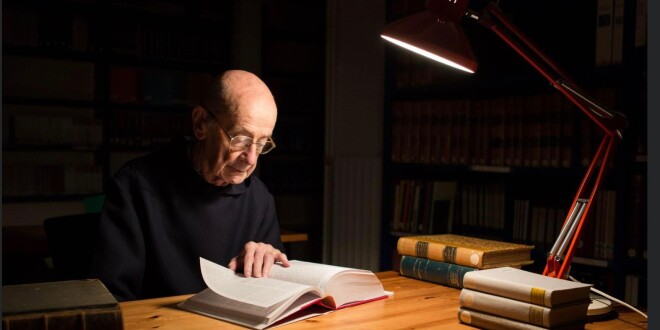



















 Area personale
Area personale



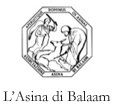



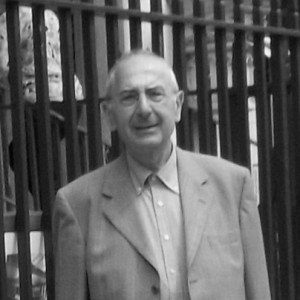
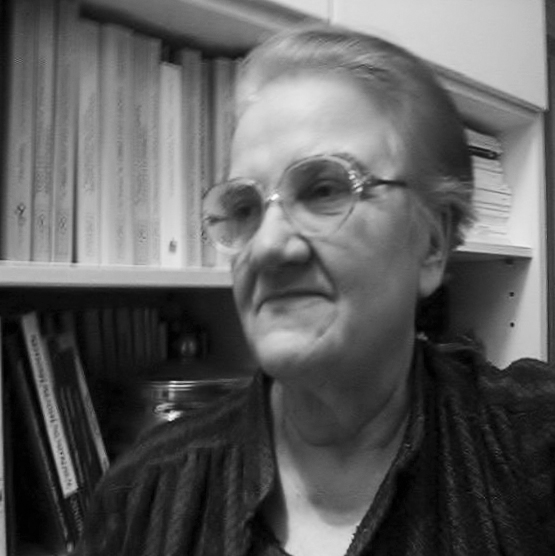

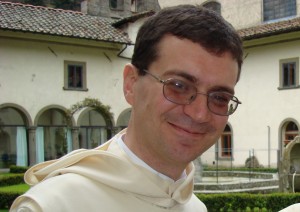

Grazie per aver condiviso questo testo, veramente prezioso e illuminante.
Professore, grazie per il Suo articolo, molto stimolante! Tuttavia, si parte dalla falsa presunzione che le riforme liturgiche del Concilio Vaticano II, in particolare del modello del santuario dove l’altare è “separato dal muro” è che “vi si possa stare/andare intorno” e renda possibile la “celebrazione verso il popolo” è rilevante e applicabile a tutte le Chiese orientali nella comunione cattolica. Questa supposizione liturgica è sviluppata da una mentalità latina, dalla comprensione dell’architettura della chiesa di rito latino. Come può il Concilio lodare la legittimità, la ricchezza e la bellezza delle singole chiese orientali e le sue venerabili pratiche e poi chiedere a tutte di seguire un presupposto comune riguardo a una precisazione liturgica, cioè l’altare da separare dal muro? Infatti, questa istruzione si trova solo nell’ istruzione generale del messale romano.
Le varie tradizioni liturgiche si vantano della loro architettura ecclesiastica,in particolare i siriani orientali, il cui dramma liturgico e l’ambientazione architettonica sono influenzati dal tempio di Gerusalemme e dal suo culto. Abbiamo il bema, bet-sqaqone, un percorso sacro al Madbaha, il santuario, il velo che nasconde, l’altare, (al centro, costruito sul muro all’estrema orientale), la casa dei tesori, i tre gradini ecc… Lo spazio liturgico è suddiviso anche per i ministri di vari gradi; il tutto contribuendo al senso teologico ed estetico della celebrazione dei sacri misteri. Per noi il santuario è il simbolo della Gerusalemme celeste, il simbolo della cima della montagna dove Gesù ha pregato e l’altare è il compimento del santo dei santi, il trono di Dio, il sepolcro di nostro Signore e il luogo della risurrezione.
Nel contesto di una teologia liturgica e architettonica così ricca, cosa significa per noi separare l’altare dal muro per girarci attorno? Infatti, tale istruzione è praticamente difficile e scomoda, tenuto conto del nostro ordinamento liturgico. La sensibilità della nostra liturgia non chiede la trasformazione del “versus” in un “intorno”! Lo “sguardo comune” ha un valore e una sensibilità liturgica, senza il quale la nostra liturgia non può funzionare. Le preghiere, i gesti sono ordinati così.
Lei ha criticato il linguaggio usato dal Sinodo, in quanto presenta solo verità parziali. Tuttavia, il Sinodo ha presentato le rubriche nel modo più chiaro. La celebrazione eucaristica non è fissata sul prete, ma sull’intera comunità, che è rivolta verso l’altare, il Signore, che è venuto, viene e verrà. Di questo, si parla nella nota esplicativa che ha accompagnato la promulgazione del nuovo Taksa – il sacerdote è rivolto nella stessa direzione del popolo, verso l’altare. Contrariamente a quanto Ha detto, “versus populum” non può garantire l’“inclusività” della celebrazione di “versus altare”; poiché spesso quando il sacerdote si trova di fronte alle persone, c’è il pericolo e la tentazione di essere presidi creativi, dove la liturgia diventa uno spettacolo, messo insieme da uomini di spettacolo spirituali, dove diventano il vero punto di riferimento e tutto dipende da loro. Questa è davvero “inclusività”? Questo è il motivo per la maggior parte dei cattolici; la liturgia non diventa un autentico incontro con il Signore. Pur guardando nella stessa direzione, ci viene ricordato che il soggetto che agisce nella liturgia è sempre e solo Christus Totus, corpo mistico di Cristo. Papa Francesco in Desiderio Desideravi dice che il prete non deve “rubare la centralità all’altare” parole approvative al comune orientamento del prete e del popolo verso l’altare. Siamo il popolo pellegrino di Dio in partenza per l’Oriente, per il Cristo che ci viene incontro. Questa svolta comune è un’espressione fondamentale della sintesi cristiana di cosmo e storia, che dà all’altare il suo risalto e il suo fulcro.
Ha detto che “versus altare” esclude “versus populum”. Questo semplicemente non è vero. Nella chiesa siro-orientale e del bel ritmo liturgico, che esprime il sacerdote, che agisce in persona Christi e in persona ecclesiae. Ci sono sette momenti durante la preghiera eucaristica e il rito della riconciliazione, in cui il sacerdote si rivolge alle persone (per chiedere preghiere, benedire, invitare i fedeli alla comunione), mostrando il sacerdote come ministro dei divini misteri, mediatore, immagine di Cristo e il presidente dell’assemblea liturgica. Il prete non ha voltato le spalle al popolo! Sta per loro e prega per loro. Sta per Cristo e li benedice. Come può un ritmo così non avere un “valore inclusivo” come dice Lei? Se si risponde a quanto chiede la liturgia, non è solo “actuosa participatio”, ma un momento di vero incontro con il Signore.
E sì, la formula 50-50 è artificiale e non corrisponde alla logica liturgica. Infatti, questa decisione è stata presa per accontentare coloro che hanno preferito l’intera celebrazione rivolta verso il popolo e l’intera celebrazione rivolta verso l’altare. Tuttavia, la decisione presa dal sinodo dei vescovi, approvata dal Dicastero per le Chiese Orientali e dal Santo Padre, richiede la nostra obbedienza senza riserve. Allearsi con i preti dissidenti, che insultano pubblicamente il Santo Padre, i vescovi, brucia le loro lettere e le loro effigi non porterà alcun bene alla Chiesa.
Tony Simon
Collegio Capranica
Caro Tony, non vi è dubbio che la tradizione siro-malabarese conosca anche le sensibilità che tu ricordi. Ma ha compiuto, in 60 anni, il cammino di riforma che implica anche il lavoro sullo spazio, sull’altare e sull’orientamento. COme bene tu illustri, le diverse sensibilità non si devono giudicare come “errori” o come “falsità”. E’ inutile negare che se ti orienti al popolo e lasci l’altare alle spalle non riesci ad essere, allo stesso tempo, verso altare e verso popolo. Proprio per questo dovremmo essere disposti non a costruire modelli artificiali, come anche tu giudichi la soluzione fifty-fifty, ma ad accogliere le differenze con lungimiranza. Nessun gesto di violenza è mai raccomandabile.Ma la difesa di un cammino condiviso non può passare per finzioni che non riconoscono il bene del cammino compiuto. La obbedienza senza riserve non può avvenire se le soluzioni proposte non sono rispettose. Un “pareggio” non ha senso il liturgia.
Ricordo ai gentili lettori che questo blog è interessato a favorire il dibattito, non a promuovere insulti o offese. I commenti irrispettosi vengono cancellati.